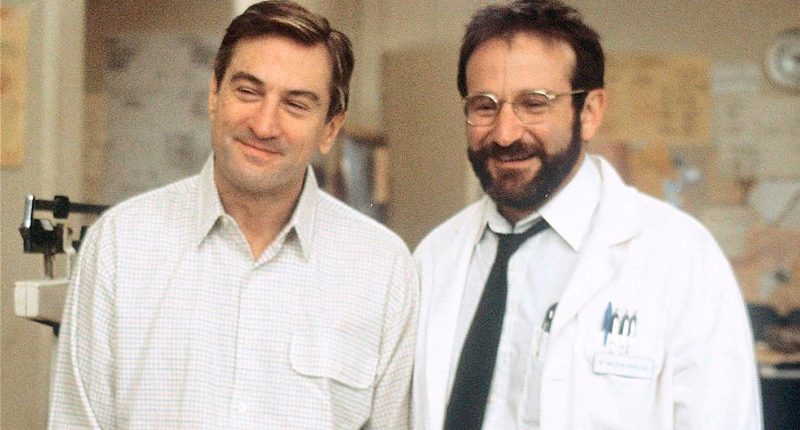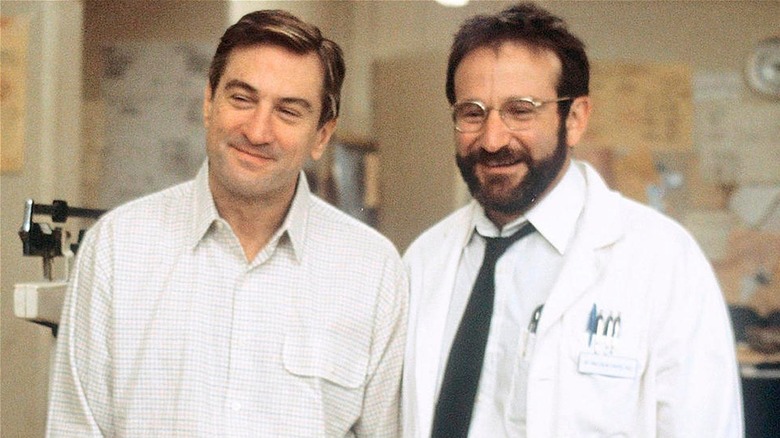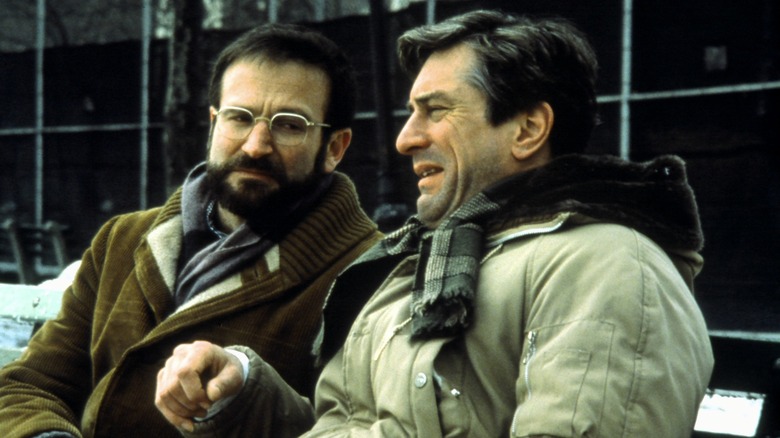Share this @internewscast.com
When the acclaimed director Penny Marshall teamed up with Columbia Pictures for the 1990 medical drama “Awakenings,” they brought together the legendary talents of Robert De Niro and Robin Williams. Both actors were at the peak of their fame, and the film earned De Niro an Oscar nomination for Best Actor, with additional nominations for Best Picture and Best Adapted Screenplay. The movie follows the story of Dr. Malcolm Sayer (played by Williams), who employs the Parkinson’s disease drug levodopa (L-dopa) to awaken patients from catatonia.
“Awakenings” is rooted in real-life treatments pioneered by neurologist Dr. Oliver Sacks in the late 1960s at Beth Abraham Hospital in the Bronx (presently known as Beth Abraham Center). The program targeted individuals left in various states of semi-consciousness following an outbreak of encephalitis lethargica, known as “the sleeping sickness,” post-World War I. Dr. Sacks documented his revolutionary work in his 1973 book, “Awakenings,” which served as the foundation for the Oscar-nominated screenplay adapted by Steven Zaillian. Sacks also contributed as a co-writer for the film adaptation.
Dr. Sacks observed a progressive decline in the conditions of his 80 patients over the years, brought on by inactivity and lack of stimulation. He hypothesized that L-dopa might engage the same neurological receptors affected in patients suffering from encephalitis lethargica. Despite his hypothesis, he was initially reluctant to administer this experimental treatment to older patients. As he recounted to ABC News in 2009, “I hesitated for two years. They’d been put away for 40 years, and I didn’t know what coming back to a world that was not their own might mean to them. And finally, my hand was forced, because so many of the patients were terribly disabled … some of them were dying.”
The effects of L-dopa wore off quickly
The broad points of “Awakenings” are largely faithful to real-life events, although director Penny Marshall took the requisite amount of artistic license in telling the story of Dr. Oliver Sacks and his patients. One important similarity between real events and the film is that the benefits of the breakthrough L-dopa treatment were short-lived. Many patients had dramatic and complete awakenings, only to slip back into catatonia shortly thereafter. Although L-dopa didn’t prove to be a permanent solution for Sacks’ patients, it is still used (via the National Library of Medicine) to treat people with Parkinson’s disease decades later.
Williams worked closely with Sacks while preparing for the film, and the two men became close friends. The actor’s study of his subject lent an authenticity to the film, even if the events portrayed didn’t happen exactly as they are shown. But Williams was able to bring Sacks’ manic focus on his patients and research to life.
Sadly, many of the major players behind “Awakenings” are no longer alive. Robin Williams left audiences with a disappointing final performance as the voice of Dennis the Dog in “Absolutely Anything” before dying of suicide in 2014. Sacks died of cancer in 2015 at the age of 82, and Marshall died in 2023 from complications of diabetes. Robert De Niro is thankfully still working in his 80s, while the film’s third lead, Julie Kavner, starred on “Rhoda” before going on to voice Marge Simpson for over four decades.
If you or someone you know is struggling or in crisis, help is available. Call or text 988 or chat 988lifeline.org








